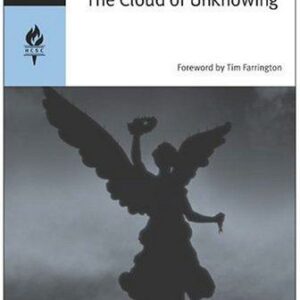The MANIAC
$28.00
| Title | Range | Discount |
|---|---|---|
| Trade Discount | 5 + | 25% |
- Description
- Additional information
Description
Named One of the 10 Best Books of 2023 by The Washington Post and Publishers Weekly • One of Barack Obama’s Favorite Books of 2023 • A National Bestseller • A New York Times Editor’s Choice pick • Nominated for the Andrew Carnegie Medal for Excellence in Fiction
“Captivating and unclassifiable, at once a historical novel and a philosophical foray . . . Labatut is a writer of thrilling originality. The MANIAC is a work of dark, eerie and singular beauty.” —The Washington Post
“Darkly absorbing . . . A brooding, heady narrative that is addictively interesting.” —Wall Street Journal
From one of contemporary literature’s most exciting new voices, a haunting story centered on the Hungarian polymath John von Neumann, tracing the impact of his singular legacy on the dreams and nightmares of the twentieth century and the nascent age of AI
Benjamín Labatut’s When We Cease to Understand the World electrified a global readership. A Booker Prize and National Book Award finalist, and one of the New York Times’ Ten Best Books of the Year, it explored the life and thought of a clutch of mathematicians and physicists who took science to strange and sometimes dangerous new realms. In The MANIAC, Labatut has created a tour de force on an even grander scale.
A prodigy whose gifts terrified the people around him, John von Neumann transformed every field he touched, inventing game theory and the first programable computer, and pioneering AI, digital life, and cellular automata. Through a chorus of family members, friends, colleagues, and rivals, Labatut shows us the evolution of a mind unmatched and of a body of work that has unmoored the world in its wake.
The MANIAC places von Neumann at the center of a literary triptych that begins with Paul Ehrenfest, an Austrian physicist and friend of Einstein, who fell into despair when he saw science and technology become tyrannical forces; it ends a hundred years later, in the showdown between the South Korean Go Master Lee Sedol and the AI program AlphaGo, an encounter embodying the central question of von Neumann’s most ambitious unfinished project: the creation of a self-reproducing machine, an intelligence able to evolve beyond human understanding or control.
A work of beauty and fabulous momentum, The MANIAC confronts us with the deepest questions we face as a species.“Wonderfully counterintuitive . . . You just throw up your hands and think, Who cares what discourse label we assign this stuff? It’s great.” —Tom McCarthy, The New York Times Book Review
“Labatut’s latest virtuosic effort, at once a historical novel and a philosophical foray, is a thematic sequel, an exploration of what results when we take reason to even further extremes . . . A contemporary writer of thrilling originality . . . The MANIAC is a work of dark, eerie and singular beauty.” —Becca Rothfeld, The Washington Post
“Darkly absorbing . . . A brooding, heady narrative that is addictively interesting . . . Certainly read this gripping, provocative novel.” —Sam Sacks, Wall Street Journal
“What [Labatut] brings to the page is something almost indescribably layered and complex that feels like a genre unto itself . . . Labatut has an uncanny ability to inhabit the psyche of these subjects—even though he’s conjuring up their recollections, they still come across as wholly reliable narrators. There is so much depth and profundity within their reminiscing, so much foreshadowing of the present moment when it seems AI is all we’re hearing about.” —Allison Arieff, San Francisco Chronicle
“The novel’s final section, a thrilling human-versus-machine matchup, points to what von Neumann had wrought—and reflects the warnings of Labatut’s Wigner. Although its science never strays from what’s been reported in the real world and although Labatut honors the discipline of historical fiction, The MANIAC qualifies as science fiction, at least as practiced by Mary Shelley and her adaptors. Neither Shelley nor Labatut includes in their work a scene of a scientist shouting, ‘It’s alive!’ as some cursed creation lumbers to life. But the warning of that moment powers The MANIAC as surely as electricity enlivened Frankenstein’s monster, a breakthrough who, in every telling, boasts the capacity to break us.” —Alan Scherstuhl, Scientific American
“Labatut’s dark vision of modern science, and the way he skillfully distorts von Neumann’s biography to communicate that darkness, will be familiar to readers of When We Cease to Understand the World . . . In addition to explaining the basics of cellular automata, Labatut turns the idea into a symbol of von Neumann’s failure to respect the difference between the gamelike abstractions of mathematics and the messy seriousness of human life . . . Labatut imagines one Go official’s view on the matter, saying, ‘There’s no point in playing out the endgame if you know you’re going to lose, right?’ Today, when AI is on the cusp of making everyone from coders to truck drivers obsolete, that question feels more uncomfortably relevant than ever.” —Adam Kirsch, The Atlantic
“Utterly absorbing . . . The book drives at the amorality with which von Neumann and his brilliant cohort set humanity on an apocalyptic path . . . [A] terrifying sense of skirting the abyss.” —The Sunday Times
“His singular technique of chronicling scientific innovation via fictionalized narrative is superbly effective, drawing the reader through a tale of technological trepidation with all the nervous patience of a burning bomb fuse. It is as thrilling as it is troubling—one of those disquieting reads whose conflicts and questions churn in your mind long after you have finished reading.” —Nautilus
“Labatut’s unique framing of John von Neumann’s brilliance and his descriptions of the transcendent power of computers and AI creates a disturbing, awe-inspiring, and inevitable vision, one foreseen by von Neumann, of an ominous future dominated by near infinite technological possibilities.” —Booklist (starred review)
“The MANIAC arrives not a second too late to help us make sense of the burgeoning AI revolution . . . It’s a necessary book, a harrowing one, and it will change the way you look at the world around you.” —LitHub
“Labatut’s book will provoke and inform, leaving us no more sure-footed in our nascent age of AI but certainly more aware.” —BookPage
“Labatut elegantly captures the sense of geniuses outstripping the typical boundaries of intellectual achievement and paying a price for it . . . Sharply written fiction ably capturing primitive emotions and boundary-breaking research.” —Kirkus
“After the slender yet incendiary When We Cease to Understand the World, Labatut returns with a sensational epic of the Hungarian American physicist and computer scientist John von Neumann . . . Labatut mesmerizes in his accessible depictions of complex scientific material and in his inspired portraits of the innovators. In his previous book, Labatut grappled with the ways in which scientific breakthroughs offered new means of experiencing reality; this one succeeds at showing how acts of genius might break the world forever. Readers won’t be able to turn away.” —Publisher’s Weekly (starred review)
“Labatut has created his own genre: fictionalized accounts of great minds in the history of science, whose genius drives them to madness . . . The MANIAC charts the sweep of modern computing, from its first inklings in punched cards used in jacquard textile looms, all the way to dramatic confrontations between artificial intelligence and acclaimed masters of chess and Go. Labatut’s prose is lucid and compelling, drawing readers on a frightening but fascinating journey; even the most right-brained among them will gain insight into the power and potential dangers of AI. Highly recommended.” —Library Journal (starred review)
UK PRAISE
“Brilliantly cerebral.” —Sunday Telegraph (five stars)
“[Labatut] is fast emerging as the most significant South American writer since Borges . . . There is no one writing like him anywhere in the world.” —Telegraph
“Intoxicating . . . this marvel of a book, which inspires awe and dread in equal measure, is stalked by the greatest terrors of the 20th century, yet its final heart-stopping sentence makes clear the greatest terrors are yet to come.” —Daily Mail
“A dark, strange novel by a rising literary star.” —New Scientist
“Absorbing . . . The MANIAC reads like physicist Carlo Rovelli crossed with the cosmic horror of HP Lovecraft.” —Chris Power, Sunday Times
“Monstrously good . . . Reads like a dark foundation myth about modern technology but told with the pace of a thriller.” —Mark Haddon
“As addictive as a true crime tale.” —Mail on Sunday
”Both entertains and provokes . . . His infernal vision of science captures something of the unsettling vertigo of living right here in the Anthropocene after all.” —TLS
“Labatut’s voice comes from the future, to free us from the curse of our present.” —Wolfram Eilenberger, author of Time of the MagiciansBenjamín Labatut is a Chilean author born in the Netherlands in 1980. He was raised in The Hague before settling in Chile, where he lives and works. He is the author of Antarctica starts here (2009), a short story collection; After the Light (2016), a series of scientific, philosophical, and historical notes on the void; The Stone of Madness (2021), a diptych on madness, chaos, and modernity; and When We Cease to Understand the World (2021), a book that explores the ecstasy and agony of scientific breakthroughs and has been translated into over thirty languages.On the morning of the twenty-fifth of September 1933, the Austrian physicist Paul Ehrenfest walked into Professor Jan Waterink’s Pedagogical Institute for Afflicted Children in Amsterdam, shot his fifteen-year-old son, Vassily, in the head, then turned the gun on himself.
Paul died instantly, while Vassily, who suffered from Down syndrome, was in agony for hours before being pronounced dead by the same doctors who had cared for him since his arrival at the institute, in January of that same year. He had come to Amsterdam because his father had decided that the clinic where the boy had spent the better part of a decade, located in Jena, in the heartland of Germany, was no longer safe for him with the Nazis in power. Vassily-or rather Wassik, as almost everyone called him-had to endure severe mental and physical disabilities during his short life; Albert Einstein, who loved the boy’s father as if they were brothers and was a regular houseguest at the Ehrenfests’ home in Leiden, nicknamed Wassik “patient little crawlikins,” for he had such trouble getting around, and would sometimes feel so much pain in his knees that he could not stand. And yet, even then, the child did not lose his seemingly boundless enthusiasm, dragging himself along the carpet, with his useless legs trailing behind, to meet his favorite “uncle” at the door. Wassik spent most of his life institutionalized, but he was a cheerful child nonetheless, often sending postcards to his parents in Leiden featuring quaint German landscapes, or letters with accounts of his daily life, written in his unsure hand, telling them what new things he had learned, how his best friend had fallen ill, how hard he was trying to be a good boy, just as they had taught him, and how in love he was with not one but two girls in his class, as well as his teacher, Mrs. Gottlieb, who was the most caring and wonderful person he had ever met, a thought that would bring tears to his father’s eyes, as Paul Ehrenfest was, first and foremost, a teacher.
Paul had suffered from extreme melancholy and bouts of crippling depression all his life. Like his son, he had been a weak boy, often ill. When he was not nursing nosebleeds, coughing due to his asthma, or dizzy and wheezing from lack of breath after escaping the bullies who teased and taunted him at school-Pig’s ear, donkey’s ear, give ’em to the Jew that’s here!-he would feign some other ailment, a fever perhaps, a cold, or an unbearable stomachache, just to stay at home in his mother’s arms, hidden from the outside, safely wrapped in her embrace, as if deep down, in some way, little Paul, the youngest of five brothers, could foretell that she would die when he was ten, and all his prior suffering was nothing but a premonition, an anticipation of loss that he dare not speak of, to himself or to others, afraid that if he said it out loud, found the courage to put it into words, her death would somehow hasten forward to meet him; so he remained silent, fearful, and sad, shouldering a weight that no child should bear, a dark foreknowledge that haunted him past her death, past his father’s demise six years after hers, and that would follow behind him like the toll of a bell up to the day of his undoing, by his own hand, at fifty-three years of age.
However much he was at odds with himself and the world, Paul was the most gifted member of his household and the best student of any class he ever took part in. He was well liked by his friends, highly esteemed by his classmates, and appreciated by his teachers, but nothing could convince him of his self-worth. Yet he was by no means an introvert; on the contrary, he would pour out everything he took in, delighting those around him with fabulous displays of knowledge and his uncanny ability to translate the most complicated ideas into images and metaphors that anyone could understand, threading together concepts from disparate fields that he drew from the ever-growing number of books he fed on with ravenous, spongelike intelligence. Paul was capable of absorbing everything around him while making no differentiations. His mind was fully porous, lacking, perhaps, some essential membrane; he was not so much interested in the world as he was invaded by its many forms. With nothing to keep him safe, he felt raw and exposed to the information flowing constantly back and forth across his blood-brain barrier. Even when he obtained his PhD and became firmly established as a distinguished professor, after succeeding the great Hendrik Lorentz in the theoretical physics chair at the University of Leiden, the only thing that really sparked joy in Paul was giving himself to others, to the point that, as one of his many beloved students remarked, “Ehrenfest distributed all that was living and active in him,” such that sometimes it looked like “he gave away everything he had found or observed, without building up a reserve, a kind of stronghold, within himself.”
As a physicist, he made no earth-shattering discoveries, but he enjoyed the full respect of such towering figures as Niels Bohr, Paul Dirac, and Wolfgang Pauli. Albert Einstein wrote that, no more than a few hours after having met Paul, he felt “as though our dreams and aspirations were meant for each other.” These friends of Paul’s admired not only his critical and intellectual capacities but something rather different, a virtue that is usually lacking among giants: ethics, character, as well as a deep, some would say overwhelming, desire to understand, to grasp the core of things. Ehrenfest sought relentlessly what he called der springende Punkt, the leaping point, the heart of the matter, as for him deriving a result by logical means was never enough: “That is like dancing on one leg,” he would say, “when the essence lies in recognizing connections, meanings and associations in every direction.” For Ehrenfest, true understanding was a full-body experience, something that involved your entire being, not just your mind or reason. He was an atheist, a doubter and a skeptic with such a rigid standard for truth that he sometimes became a figure of fun among his peers: in 1932, at the end of a meeting of three dozen of Europe’s best physicists at the Niels Bohr Institute in Copenhagen, a parody of Faust was staged to celebrate the centennial of Goethe, and Paul was cast as the great scholar Heinrich Faust himself, unwilling to be convinced by the demon Mephistopheles, portrayed by Wolfgang Pauli, of the existence of the neutrino, a newly postulated fundamental particle.
They called him the Conscience of Physics, and while there was a hidden barb in that nickname due to Ehrenfest’s undeterred opposition to the road that not only physics but the whole of the exact sciences seemed to be taking during the first decades of the twentieth century, many of his colleagues would visit him regularly at his home in Leiden, just across the river from the university, to try their ideas on him, and on his wife, since Tatyana Alexeyevna Afanassjewa was an accomplished mathematician in her own right. She coauthored some of Ehrenfest’s most important scientific papers, including the one that first made his name (though it did almost nothing for her career) and eventually led to his appointment as successor to the much-revered Lorentz: it was a summary article on statistical mechanics, a favored subject of his mentor, the ill-fated Ludwig Boltzmann. Boltzmann was one of the strongest advocates of the atomic hypothesis, a veritable trailblazer who first discovered the role that probability plays in the behavior and properties of atoms. Like Ehrenfest, Boltzmann also suffered greatly during his restless and unhappy life, crippled as he was by severe bouts of uncontrollable mania and abysmal depression, the effects of which were compounded by the vicious antagonism that his revolutionary ideas bred among his peers. Ernst Mach, a staunch positivist who contended that physicists should not speak of atoms as anything but theoretical constructs-since, at the time, there was no direct evidence for their existence-hounded and mocked Boltzmann without end, interrupting one of his lectures on atoms with the mean-spirited question: “Have you ever seen one?” The Bull, as his friends called Boltzmann due to his corpulence and his stubborn tenacity, despaired at the ferocity of his critics, and even though he laid down one of the fundamental equations of modern physics, his statistical interpretation of the second law of thermodynamics, in his personal life he could not escape the slow and constant advance of his mental disorder, which seemed, like the entropy of the universe he had so wonderfully captured in his equation, to be constantly and irreversibly increasing, leading to inevitable randomness and decay. He admitted to his colleagues that he lived in perpetual fear that he might suddenly lose his mind during a lecture. Toward the end of his life he could hardly breathe from his asthma, his eyesight dimmed to the point where he could no longer read, and his headaches and migraines became so utterly unbearable that his physician ordered him to completely abstain from any scientific activity. In September 1906, Boltzmann hanged himself with a short rope from the crossbars of the window frame in a room at the Hotel Ples, during a summer holiday in Duino, near Trieste, while his wife and young daughter were out swimming in the calm, turquoise waters of the Adriatic.
Speak the truth, write with clarity, and defend it to your very end was Boltzmann’s personal motto, and Paul, his disciple, took it to heart. The weight of the respect that Ehrenfest carried among so many outstanding physicists was due to his capacity to bring other people’s ideas into sharp focus and capture their fundamental essence, transmitting this knowledge with such passion and vim that his audience was brought in to his thinking as if under a spell. “He lectures like a master. I have hardly ever heard a man speak with such fascination and brilliance. Significant phrases, witty points and dialectic are all at his disposal in an extraordinary manner. He knows how to make the most difficult things concrete and intuitively clear. Mathematical arguments are translated by him into easily comprehensible pictures,” wrote the great German theoretical physicist Arnold Sommerfeld, who both appreciated and feared Ehrenfest’s fame as the grand inquisitor of physics. Paul did not shy away from pointing out flaws in other people’s arguments with the same pitiless criticism with which he would chastise himself; that role of his was particularly important during the fateful Solvay Conference of 1927, when classical physics and quantum mechanics faced off, forever changing the foundations of that branch of science. Ehrenfest mediated between the two major players-Einstein, who abhorred the weight that chance, indeterminacy, probability, and uncertainty were given in the new science of the quantum, and Bohr, who sought to enthrone a fundamentally different type of physics for the subatomic world. At one point, Ehrenfest took to the stage among the gaggle of some thirty-odd Nobel Prize winners screaming over each other in French, English, German, Dutch, and Danish and scribbled a couple of verses from the Bible on the blackboard: The Lord did there confound the languages of all the Earth. Everyone laughed, but the arguments continued to rage on for days, with quantum mechanics coming out victorious over the classical scheme of physics, in spite of, or perhaps due to, the fact that it was completely opposed to common sense. Although Ehrenfest was firmly on the side of the new, and much more open than his friend Einstein to the revolutionary principles coming from Bohr, Heisenberg, Born, and Dirac, he could not shake the feeling that a fundamental line had been crossed, that a demon, or perhaps a genie, had incubated in the soul of physics, one that neither his nor any succeeding generation would be able to put back in the lamp. If one were to believe the novel rules governing the inner realm of the atom, suddenly the entire world was no longer as solid and real as it once was. “Surely there is a special section in purgatory for professors of quantum mechanics!”
Paul wrote to Einstein when he returned from Solvay to Leiden, but all his attempts at humor could not slow his descent into the dark pit toward which he seemed to be spiraling down at a faster and faster pace, not least due to the strange direction that his hallowed discipline was taking, filled as it now was with logical contradictions, uncertainties, and indeterminacies that he could no longer explain to his beloved students, as he had no way of understanding them himself. In May 1931, Ehrenfest confessed his fears to Niels Bohr in a letter: “I have completely lost contact with theoretical physics. I cannot read anything anymore and feel myself incompetent to have even the most modest grasp about what makes sense in the flood of articles and books. Perhaps I cannot at all be helped anymore. Every new issue of the Zeitschrift für Physik or the Physical Review immerses me in blind panic. I know absolutely nothing!” Bohr wrote back to console his friend, pointing out that it was not just Ehrenfest, but the whole of the physics community that was having problems dealing with the latest discoveries, only to receive an even longer letter in return, in which Paul decried that he felt like a dog that, totally exhausted, was running after a streetcar carrying his master out of sight. Where some saw the quantum revolution as a protean fire sparking novel results at an unrelenting pace, Ehrenfest saw mostly stagnation and even degeneration: “Those awful abstractions! That incessant focus on tricks and techniques! The mathematical plague that erases all powers of imagination!” he cried out bitterly before his students in Leiden.
The direction in which theoretical physics was heading went completely against his grain: real, physical intuition was being replaced with brute-force artillery, and mathematical formulae were set in place of matter, atoms, and energy. Paul detested the likes of John von Neumann, that Hungarian wunderkind, with his “terrifying mathematical guns and unreadably complicated formula apparatus,” as much as he despised the indigestion that the “infinite Heisenberg-Born-Dirac-Schrödinger sausage-machine factory” caused him. He lamented the attitude of his younger students, who “no longer noticed that their heads had been turned into relays in a telephone network for communicating and distributing sensational physics messages” without realizing that, like almost all modern developments, mathematics was hostile to life: “It is inhuman, like every truly diabolic machine, and it kills everyone whose spinal marrow isn’t conditioned to fit the movement of its wheels.” His already excruciating self-criticism and inferiority complex became truly unbearable, for although he knew mathematics, it was not simple for him. He was not a computer. He could not calculate with ease, and his inability to keep up with the times fueled a self-destructive streak that was his constant companion and torturer, an inner voice that whispered to him, and continuously betrayed him. By 1930, his letters to his friends spoke of nothing but death and despair: “I clearly feel I’ll destroy my life if I don’t succeed in pulling myself together. Every time I have a chance to review my affairs, I see some sort of chaos in front of me-a gambler or alcoholic has to see similar pictures when sober.” His inner turmoil mirrored the economic and political turbulence that was beginning to tear Europe apart. Paul was officially nondenominational; Jews were not allowed to marry Christians in the Austro-Hungarian empire, and both he and Tatyana had given up their respective religions to marry each other back in 1904. But with anti-Semitism growing on all sides, he began to entertain increasingly morbid thoughts. In 1933, he wrote to his friend Samuel Goudsmit with a macabre plot to shock German society out of its Nazi-induced trance: “What if a group of eminent, elderly Jewish academics and artists collectively commit suicide, without any demonstration of hatred or issuance of demands, in order to prick the German conscience?”
Goudsmit wrote back in a fury, sick of his friend’s obsession with suicide and disgusted by the utter absurdity of his idea: “A group of dead Jews can do nothing, and their deaths would merely delight das teutonische Volk.” Three days before Ehrenfest wrote that letter, Hitler’s regime, barely two months old, had enacted the Law for the Restoration of the Professional Civil Service, putting all Jews who held government jobs at risk, a move that convinced Ehrenfest that “the remarkably open and carefully planned extermination of the Jewish ‘plague’ from German art, science, jurisprudence, and medicine would quickly be 90 percent effective.” During the last year of his life he used his contacts and influence to help Jewish scientists find work outside of Germany, even though he had lost all faith in a possible future for himself. His thoughts went around in a furious circle, with money never far from his mind: his Leiden home was mortgaged many times over. He longed to put an end to his own suffering, but he could not bear to leave his wife with the care of poor Wassik-she had lost all her investments in Russian stock in the aftermath of the First World War and the Russian Revolution-or inflict such a lifelong burden of charge on his two eldest daughters, Tatyana and Galinka, or his older son, Paul Jr. His suicidal fantasies, which up to that point had been exclusively centered on his own death, began to include his youngest child: “Surely you understand my wish that Galinka and Tanitschka should not in the future have to work themselves to the bone simply to keep their idiot brother alive?” he wrote to Nelly Posthumus Meyjes, an art historian with whom he was having an intense love affair that brought him a small measure of joy and happiness, but also inflamed his already disordered mental state.US
Additional information
| Weight | 18 oz |
|---|---|
| Dimensions | 1.2000 × 6.1500 × 9.3000 in |
| Imprint | |
| Format | |
| ISBN-13 | |
| Author | |
| Audience | |
| BISAC | |
| Subjects | historical fiction books, when we cease to understand the world, oppenheimer movie, american Prometheus, fictional biography, maniac, von neumann, oppenheimer, new york times best books, world war ii fiction, world war 2 fiction, wwii historical fiction, world war 2 historical fiction, FIC014050, best books, books historical fiction, WWII, historical novels, fiction books, WWII books, books on AI, John von Neumann, game theory, political books, FIC037000, literary fiction, ai, artificial intelligence, historical fiction, world war ii, WW2 |











